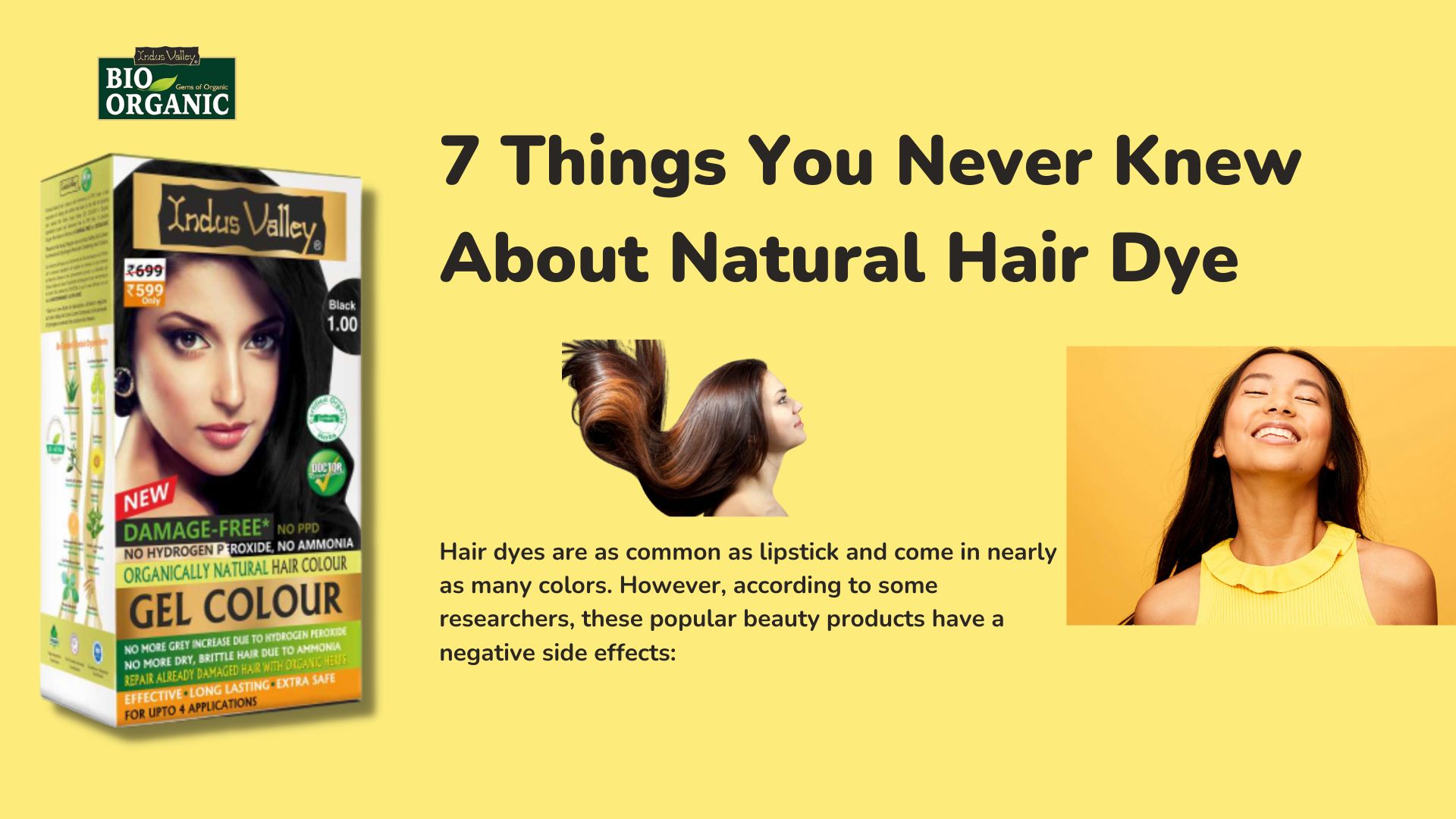Almost every lady we know has colored her hair at some point. Hair coloring has become a fairly common practice, whether to conceal grey hair or to achieve a new look. In fact, some of us go to the salon or DIY hair color at home every month to cover grey hair.
Regular hair color, as common as it is, contains ingredients that can be quite harsh. While we are not ingesting the hair dyes, the scalp is one of the most absorbent parts of the body and will absorb the majority of the chemicals applied to it. Some of these toxins are excreted by your liver, but others remain in your body for months.
Organic hair colours DO NOT imply a lack of chemicals :
We cannot guarantee this in the future, but there are currently NO organic hair colours that use 100% natural ingredients, at least not consistently effective ones.
Regular hair dyes work as follows: ammonia opens the cuticle of the hair, deposits the colour pigment within, and then closes the cuticle with a good conditioner.
Organic hair colours typically replace ammonia with a less problematic substance. This is due to the fact that ammonia has been linked to respiratory problems, breathing difficulties, and allergies. In fact, most professional ammonia-free hair dye use Ethanolamine (MEA) to replace ammonia because it also raises the pH of the hair, allowing the colour molecules to penetrate.
Organic hair colours still contain trace amounts of toxins :
They may advertise themselves as “organic” or “ammonia-free,” but not all organic hair colours are created equal. Many organic hair colour brands still contain some potentially toxic ingredients, such as PPD and resorcinol, albeit in much lower concentrations.
One of them is Indus Valley Hair Color. PPD is replaced with 0.3% TDS. TDS is still toxic, but it has been shown to be less likely to cause allergies than PPD.
Although most contain some form of allergen, Original & Minerals is one of the few organic hair brands that truly contain PPD and resorcinol. They removed ammonia, PPD, and Resorcinol from their formula specifically to make it suitable for those with sensitive skin.
Organic hair colours DO NOT imply a lack of allergies:
As previously stated, organic hair colours contain a variety of other chemicals, some of which contain low levels of toxins. This means that even with organic hair colours, sensitive people can develop allergies.
That is why stylists advise those with sensitive skin to perform a patch test a few days before colouring their hair to reduce the possibility of allergies.
Organic hair colors do not have to be dull :
There is a popular misconception that organic hair colours can only be used to colour your hair black or brown. If you are willing to accept 0.02% PPD in your hair colour, you can achieve beautiful hair colours like this:
If you want to bleach or lighten your hair, make sure to look for brands that use ammonia-free bleach and whitener. Using ammonia bleach with natural hair dye defeats the purpose of using ammonia-free shades because the combination renders it ammonia-free.
Some organic hair colours can also cover grey hair:
Granted, you could experiment with some organic hair colours that do not cover grey hair well. While henna is completely natural, it does not cover grey hair well or consistently. This defeats the purpose of colouring one’s hair.
With ammonia removed from most organic hair brands, it’s no surprise that organic hair salons smell much better! Have you ever had your hair coloured organically? Please share your thoughts in the comments section!




